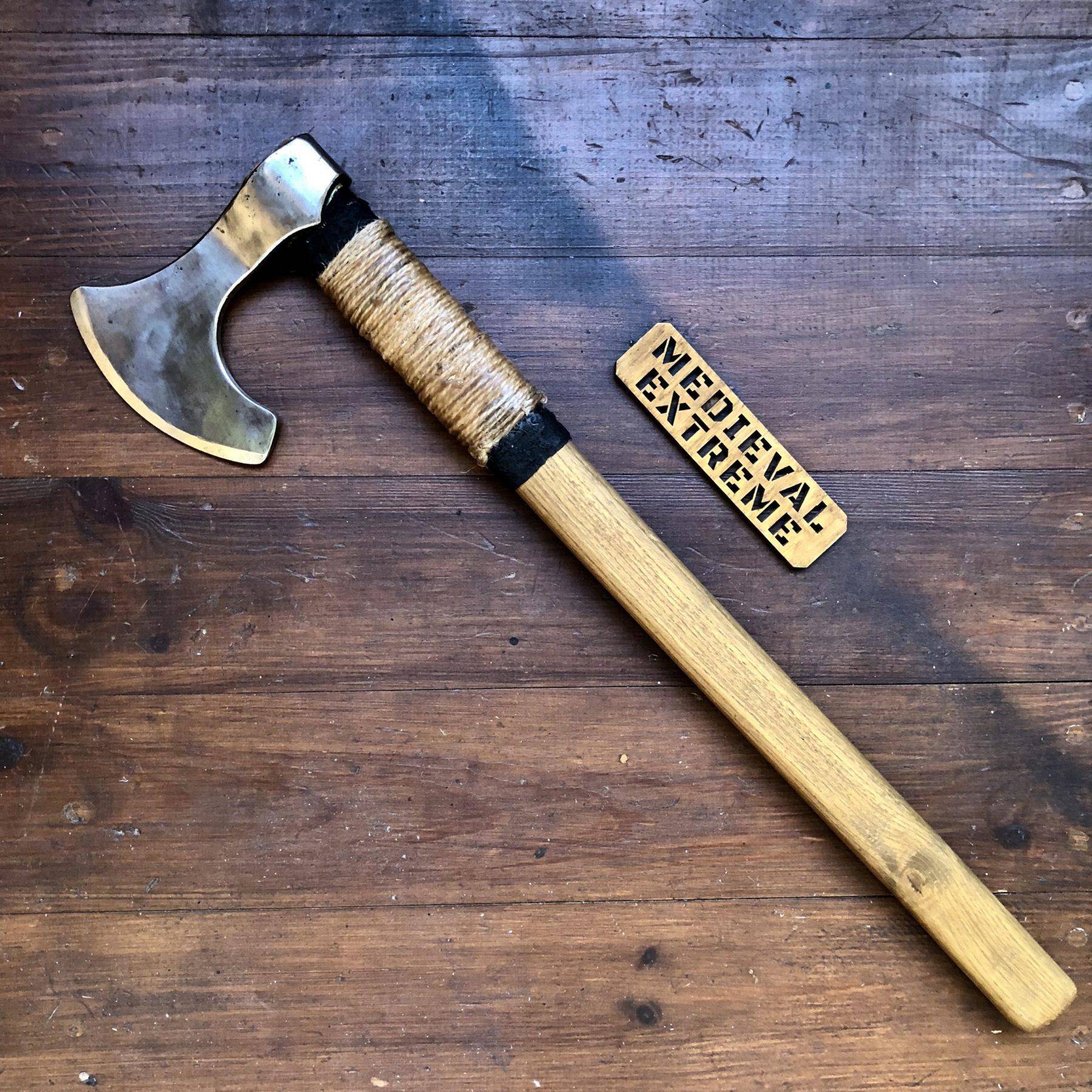

The thickening of the blade behind the edge indicates that the latter was formed from a strip, probably of hardened steel, which was welded into a wide groove in the end of the blade.Ĭontemporary illustrations such as the Bayeux Tapestry and examples of Danish and Anglo-Saxon sculpture show warriors wielding similar axes with hafts more than half the man’s height, or even reaching to the shoulder. There is a wood piece up front that has lines on it as to help with hight adjustment and aiming. Live action role-players can find plenty of LARP supplies at Medieval Collectibles to satisfy their needs. One for a far range attacks, and one for shorter distances. 08-July 09 by Barry Agerįindspot: River Thames, probably at London, EnglandĪxe-head from a double-handed battle-axe of Petersen’s type M with a very broad, convex edge, and short, triangular projections above and below either side of the socket. As deployed in a splayed array around a defensive block formation, the Schiltron would have looked quite formidable to an approaching horseman. Halberds are Medieval weapon that is a hybrid of an axe and a spear so you can stab and slice. 63.Ĭatalogue entry for Die Wikinger, Speyer, Germany, Dec.

Axes could be modified into deadly projectiles as well (see the. Since swords were not effectively useful against plate armor, maces, axes and war hammers were preferred by foot soldiers during the middle ages. Museum Replicas offers an extensive line of authentic weapons made like. Most of them had broad socket heads that allowed the axe head and shaft to fit together and the crescent-shaped blade of about 10 inches fixed between the lower and upper points of the broad cutting edge. Used to crush, stab and deliver devastating blows, these instruments would inflict great injury or even death to their opponent. Ancient battle axes found during the medieval period were used as a close contact weapon. Much of the medieval fighting was in close quarters, which made these weapons ideal. (ed.) (1940): 'Viking Antiquities in Great Britain and Ireland IV', Oslo, 86 Graham-Campbell, J. Besides axes designed for combat, there were many axes that doubled as tools and weapons. Type 16 Curved Broad Arrowhead (set of 5) 601037. These examples show the axe at the height of its use and popularity from the pre medieval period.

(1927): 'London and the Vikings' (London Museum Catalogues, No. The Axe was one of the first tools and weapons made by man. It is a widespread type, from Normandy to Finland, which appears to be that featured in the Bayeux tapestry. Found in the River Thames, from which several axes of this late, broad-bladed form (Petersen Type M) have been recovered.


 0 kommentar(er)
0 kommentar(er)
